-
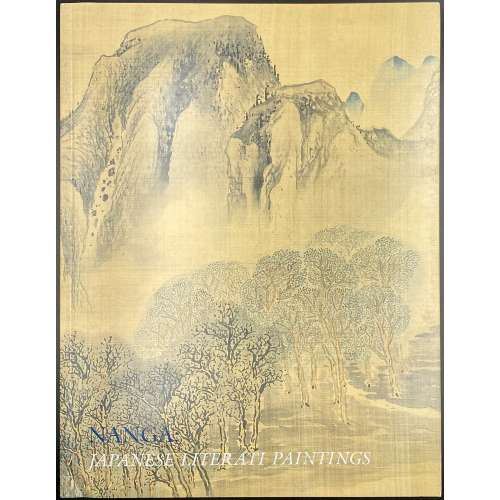 Softcover, in pictorial flapped wrappers, 28 x 21.6 cm, 21 entries, with colour illustrations. Catalogue # 10 of the sales exhibition on March 30 - April 6, 2005 in NY; pagination: [1-3] 4-50 [2], ils. Contributor: Sebastian Izzard
Softcover, in pictorial flapped wrappers, 28 x 21.6 cm, 21 entries, with colour illustrations. Catalogue # 10 of the sales exhibition on March 30 - April 6, 2005 in NY; pagination: [1-3] 4-50 [2], ils. Contributor: Sebastian Izzard -
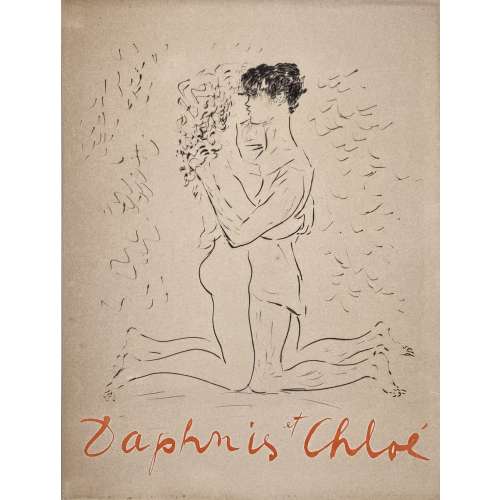 Description: Original pictorial wrappers, folio, unbound, in a double slipcase with gilt lettering to spine; pp. [4] [1-12] 13-204 [4], 53 folded leaves, 47 dry-point illustrations after Marcel Vertès. Limitation: Edition of 140 copies on Arches paper of which 20 copies (№ 1-20) enriched with one original drawing, one suite of plates incl. 5 cancels and 5 full-page prints; 105 copies (№ 21-125); 15 copies (№ I-XV) for collaborators of witch 5 enriched with an original drawing and a complete suite of plates. This is copy № 45, enriched with an A.L. signed by Claude Roger-Marx (Jewish- French, 1888 – 1977). Colophon: Printed on January 15, 1954 in Paris on a press of madame J.-G. Daragnès by Éditions Manuel Bruker. Catalogue raisonné: Vokaer № 57. Other titles: Daphnis and Chloe (en), Daphnis et Chloé (fr), Daphnis und Chloe (de), Dafnis y Cloe (es), Gli amori pastorali di Dafni e Cloe (it). Other editions in this collection: LIB-2870.2021 and LIB-1926.2019. Contributors: Longus [Λόγγος] (Greek, 2nd century AD) – author Jacques Amyot (French, 1513 – 1593) – translator Paul Louis Courier (French, 1772 – 1825) – editor Marcel Vertès [Marcell Vértes] (Jewish-Hungarian-French, 1895 – 1961) – artist/illustrator Jean-Gabriel Daragnès (French, 1886 – 1950) – printer Manuel Bruker [Mendel Brucker] (Jewish-Hungarian-French, 1891 – 1979) – publisher Portrait of Jacques Amyot engraved by Nicolas de Larmessin I (French, 1632 – 1694) in this collection: Isaac Bullart. Academie des sciences et des arts / 2 volumes. — Amsterdam: Elzevier [i.e. Brussels: Foppens], 1682. [LIB-2676.2021]:
Description: Original pictorial wrappers, folio, unbound, in a double slipcase with gilt lettering to spine; pp. [4] [1-12] 13-204 [4], 53 folded leaves, 47 dry-point illustrations after Marcel Vertès. Limitation: Edition of 140 copies on Arches paper of which 20 copies (№ 1-20) enriched with one original drawing, one suite of plates incl. 5 cancels and 5 full-page prints; 105 copies (№ 21-125); 15 copies (№ I-XV) for collaborators of witch 5 enriched with an original drawing and a complete suite of plates. This is copy № 45, enriched with an A.L. signed by Claude Roger-Marx (Jewish- French, 1888 – 1977). Colophon: Printed on January 15, 1954 in Paris on a press of madame J.-G. Daragnès by Éditions Manuel Bruker. Catalogue raisonné: Vokaer № 57. Other titles: Daphnis and Chloe (en), Daphnis et Chloé (fr), Daphnis und Chloe (de), Dafnis y Cloe (es), Gli amori pastorali di Dafni e Cloe (it). Other editions in this collection: LIB-2870.2021 and LIB-1926.2019. Contributors: Longus [Λόγγος] (Greek, 2nd century AD) – author Jacques Amyot (French, 1513 – 1593) – translator Paul Louis Courier (French, 1772 – 1825) – editor Marcel Vertès [Marcell Vértes] (Jewish-Hungarian-French, 1895 – 1961) – artist/illustrator Jean-Gabriel Daragnès (French, 1886 – 1950) – printer Manuel Bruker [Mendel Brucker] (Jewish-Hungarian-French, 1891 – 1979) – publisher Portrait of Jacques Amyot engraved by Nicolas de Larmessin I (French, 1632 – 1694) in this collection: Isaac Bullart. Academie des sciences et des arts / 2 volumes. — Amsterdam: Elzevier [i.e. Brussels: Foppens], 1682. [LIB-2676.2021]: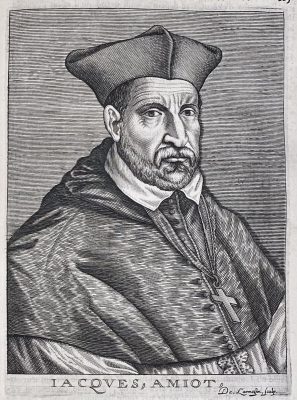
-
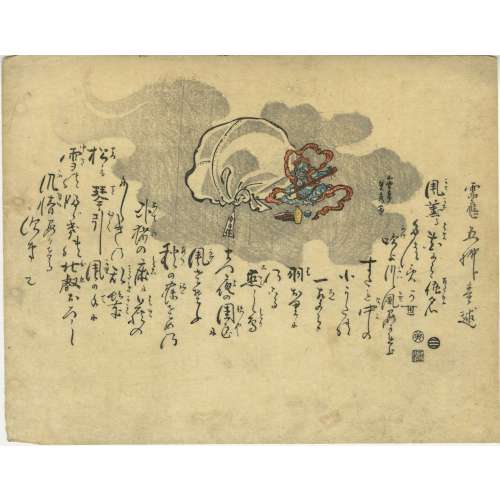 Artist: Utagawa Sadahide [歌川 貞秀], a.k.a. Gountei Sadahide [五雲亭 貞秀] (Japanese, 1807 – c. 1878-9). Publisher: Ibaya Senzaburō [伊場屋仙三郎] (Japanese, c. 1815 – 1869). Date-kiwame seal: 1831 (Tenpō 2). Size: Uchiwa-e, 298 x 232 mm. Pair of uncut fan prints (1) with the god of wind and (2) with the god of thunder meant to be pasted on two sides of a fan.
Artist: Utagawa Sadahide [歌川 貞秀], a.k.a. Gountei Sadahide [五雲亭 貞秀] (Japanese, 1807 – c. 1878-9). Publisher: Ibaya Senzaburō [伊場屋仙三郎] (Japanese, c. 1815 – 1869). Date-kiwame seal: 1831 (Tenpō 2). Size: Uchiwa-e, 298 x 232 mm. Pair of uncut fan prints (1) with the god of wind and (2) with the god of thunder meant to be pasted on two sides of a fan.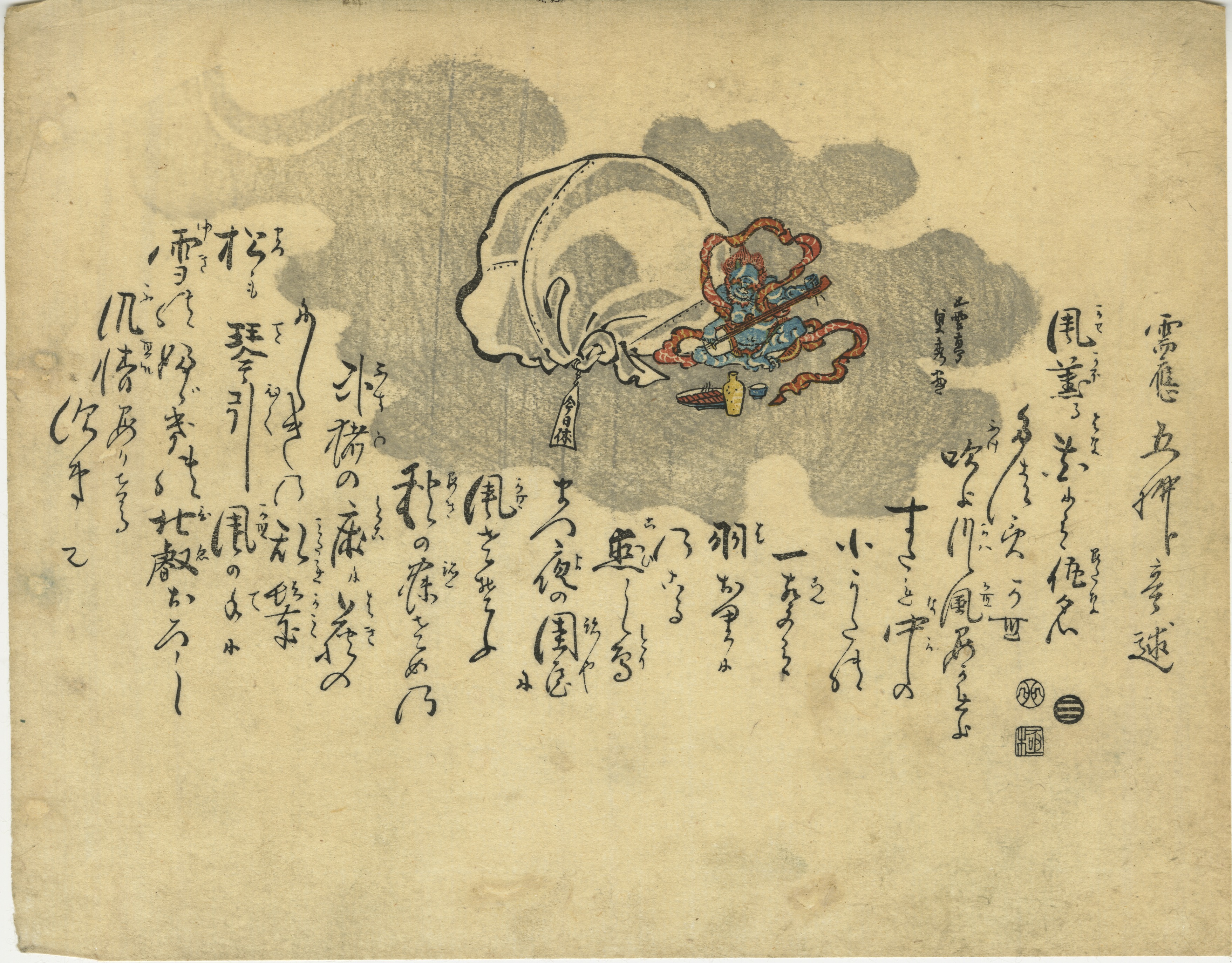
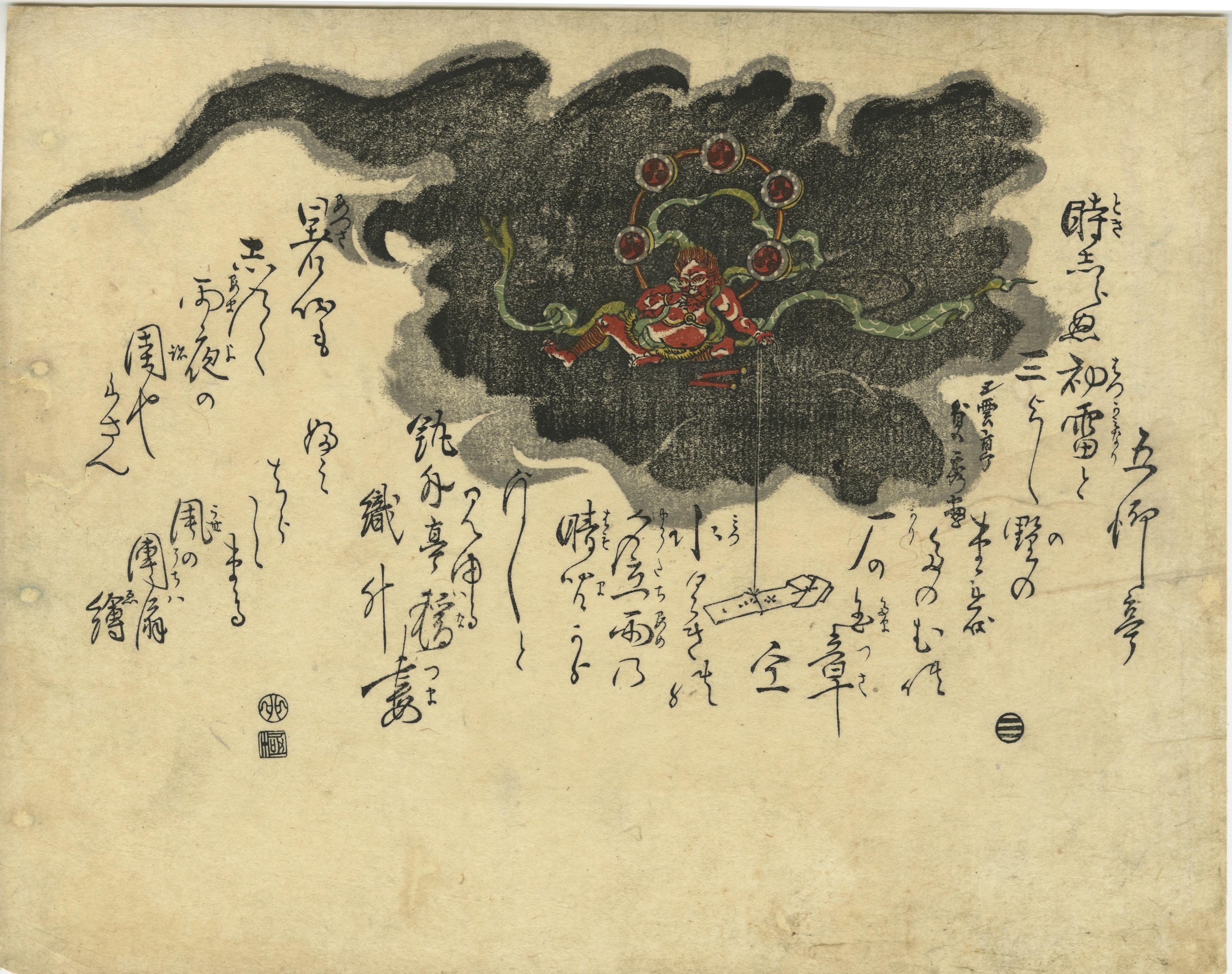
-
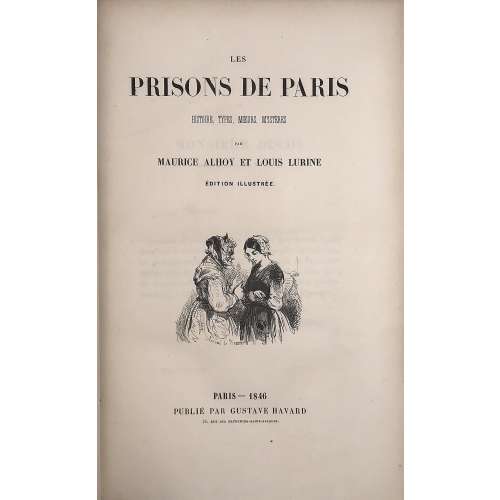 Exterior: 4to, 27.3 x 18 cm, quarter black morocco over marbled boards, double gilt fillet border, spine with raised bands, compartments framed in gilt with gilt fleurons, black label lettered in gilt; marbled endpapers. Inscription to half-title in the bottom: no 411. Bookplate to front pastedown. Title-page: LES | PRISONS DE PARIS | HISTOIRE, TYPES, MŒURS, MYSTÈRES | PAR | MAURICE ALHOY ET LOUIS LURINE | ÉDITION ILLUSTRÉE. | {vignette} | PARIS — 1846 | PUBLIÉ PAR GUSTAVE HAVARD | 24, RUE DES MATHURINS-SAINT-JACQUES. || Printer: Lacrampe et Comp. Collation: 4to; π2 a4 1-684 χ2; total 280 leaves and 34 leaves of plates. Pagination: first and last leaves blank; [2 -h.t./imprint.] [2 - t.p./blank] [2 dedication/blank] [i intro] ii-vi, [1] 2-544 [2 - list of plates/advert.] [2 - contents/blank]; total 560 pages, plus 34 wood-engraved plates, incl. a frontispiece by Laisne after Bertall, and numerous in-text woodcuts. Provenance: Bookplate of Selim Hippolyte Ansart (French, 1829 – 1897), commissar of police in the Second Empire and shortly after (chef de la police municipaie ; chevalier du 13 août 1867; vingt-trois ans de service effectif). Authors: Philadelphe-Maurice Alhoy (French, 1802 – 1856) Louis Lurine (French, 1812 – 1860) Artists: Bertall [ Bertal; Charles Albert d’Arnoux (French, 1820 – 1882) Jules [Jean-Baptiste] David (French, 1808–1892) Charles-François Pinot (French, 1817 – 1879) Eustache Lorsay [French, Eugène Lampsonius] (1822 – 1871) Pierre Édouard Frère (French, 1819 – 1886) Charles-Édouard de Beaumont (French, 1819 – 1888) Engravers Laisné Adèle / Aglaé / Alfred (French, fl. 1835 – 1868) Louis Dujardin (French, 1808 – 1859) François Rouget (Belgian, c. 1825 – ?) Janet-Lange [Ange-Louis Janet] (French, 1815 – 1872) Jacques Adrien Lavieille (French, 1818 – 1862) Timms (French, fl. c. 1839 – 1865) Félix Leblanc (French, 1823 – ?) Émile Montigneul (French, fl. 1840 – 1850)
Exterior: 4to, 27.3 x 18 cm, quarter black morocco over marbled boards, double gilt fillet border, spine with raised bands, compartments framed in gilt with gilt fleurons, black label lettered in gilt; marbled endpapers. Inscription to half-title in the bottom: no 411. Bookplate to front pastedown. Title-page: LES | PRISONS DE PARIS | HISTOIRE, TYPES, MŒURS, MYSTÈRES | PAR | MAURICE ALHOY ET LOUIS LURINE | ÉDITION ILLUSTRÉE. | {vignette} | PARIS — 1846 | PUBLIÉ PAR GUSTAVE HAVARD | 24, RUE DES MATHURINS-SAINT-JACQUES. || Printer: Lacrampe et Comp. Collation: 4to; π2 a4 1-684 χ2; total 280 leaves and 34 leaves of plates. Pagination: first and last leaves blank; [2 -h.t./imprint.] [2 - t.p./blank] [2 dedication/blank] [i intro] ii-vi, [1] 2-544 [2 - list of plates/advert.] [2 - contents/blank]; total 560 pages, plus 34 wood-engraved plates, incl. a frontispiece by Laisne after Bertall, and numerous in-text woodcuts. Provenance: Bookplate of Selim Hippolyte Ansart (French, 1829 – 1897), commissar of police in the Second Empire and shortly after (chef de la police municipaie ; chevalier du 13 août 1867; vingt-trois ans de service effectif). Authors: Philadelphe-Maurice Alhoy (French, 1802 – 1856) Louis Lurine (French, 1812 – 1860) Artists: Bertall [ Bertal; Charles Albert d’Arnoux (French, 1820 – 1882) Jules [Jean-Baptiste] David (French, 1808–1892) Charles-François Pinot (French, 1817 – 1879) Eustache Lorsay [French, Eugène Lampsonius] (1822 – 1871) Pierre Édouard Frère (French, 1819 – 1886) Charles-Édouard de Beaumont (French, 1819 – 1888) Engravers Laisné Adèle / Aglaé / Alfred (French, fl. 1835 – 1868) Louis Dujardin (French, 1808 – 1859) François Rouget (Belgian, c. 1825 – ?) Janet-Lange [Ange-Louis Janet] (French, 1815 – 1872) Jacques Adrien Lavieille (French, 1818 – 1862) Timms (French, fl. c. 1839 – 1865) Félix Leblanc (French, 1823 – ?) Émile Montigneul (French, fl. 1840 – 1850) -
 Iron tsuba of a round form (maru-gata) pierced (sukashi) with two six-petal flowers at 6 and 12 o’clock and modified lozenges at 3 and 9 o’clock, and inlaid in brass (suemon-zōgan) with tendrils and flowers (chrysanthemum, cherry blossom, Chinese bellflower, paulownia); openings outlined with scalloped brass wire. The plate is slightly concave with traces of lacquer on the surface. Nakago-ana plugged with copper sekigane. Some elements of inlay missing. The rim with conspicuous tekkotsu, quite worn. Measurements: Height 92.0 mm; Width 86.3 mm; thickness at seppa-dai 3.2 mm, at rim 4.2 mm. Time: Late Muromachi (1514 – 1573) or earlier.
Iron tsuba of a round form (maru-gata) pierced (sukashi) with two six-petal flowers at 6 and 12 o’clock and modified lozenges at 3 and 9 o’clock, and inlaid in brass (suemon-zōgan) with tendrils and flowers (chrysanthemum, cherry blossom, Chinese bellflower, paulownia); openings outlined with scalloped brass wire. The plate is slightly concave with traces of lacquer on the surface. Nakago-ana plugged with copper sekigane. Some elements of inlay missing. The rim with conspicuous tekkotsu, quite worn. Measurements: Height 92.0 mm; Width 86.3 mm; thickness at seppa-dai 3.2 mm, at rim 4.2 mm. Time: Late Muromachi (1514 – 1573) or earlier. -
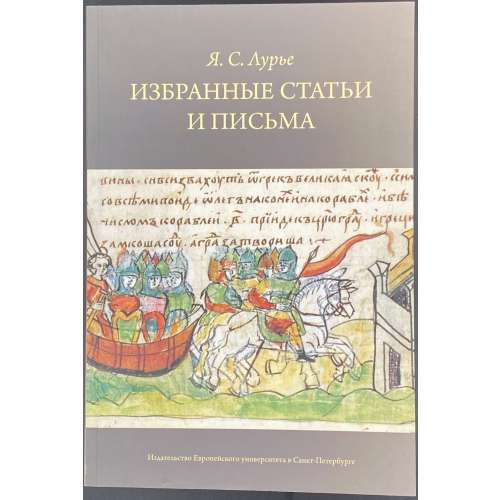 Paperback, pictorial wrappers, 20.5 x 14 cm, pp.: [1-4] 5-271 [272 colophon]. Title-page: Я. С. Лурье | ИЗБРАННЫЕ СТАТЬИ | И ПИСЬМА | Санкт-Петербург 2011 || Contributors: Яков Соломонович Лурье (Russian-Jewish, 1921 — 1996) Варвара Гелиевна Вовина-Лебедева (Russian, b. 1961) Михаил Маркович Кром (Russian, b. 1966)
Paperback, pictorial wrappers, 20.5 x 14 cm, pp.: [1-4] 5-271 [272 colophon]. Title-page: Я. С. Лурье | ИЗБРАННЫЕ СТАТЬИ | И ПИСЬМА | Санкт-Петербург 2011 || Contributors: Яков Соломонович Лурье (Russian-Jewish, 1921 — 1996) Варвара Гелиевна Вовина-Лебедева (Russian, b. 1961) Михаил Маркович Кром (Russian, b. 1966) -
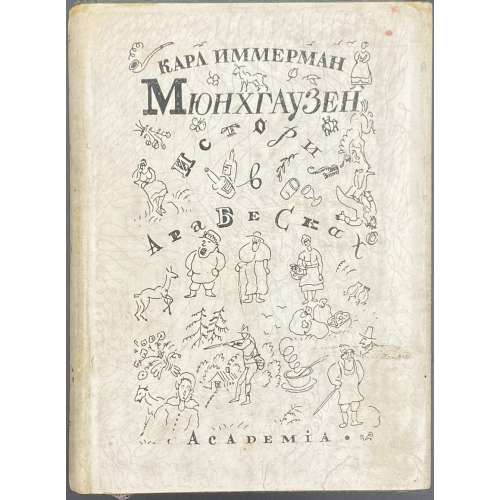
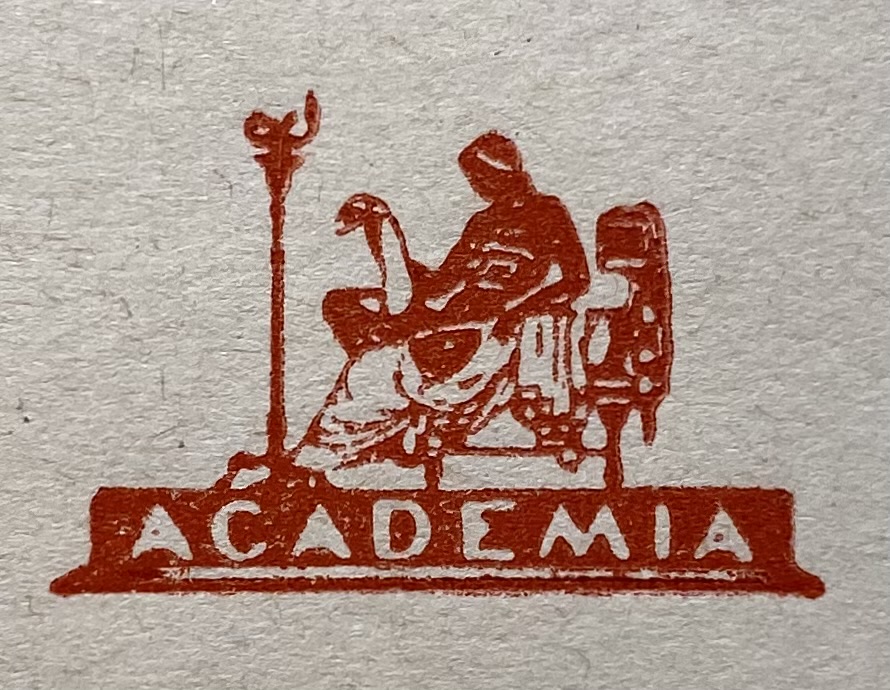 The book Münchhausen: eine Geschichte in Arabesken by Karl Leberecht Immermann was published in Düsseldorf by J. E. Shaub in 1838-1839. Its Russian translation by the Yarkho brothers was published in 1931 and 1932 by Academia publishing in two volumes uniformly bound in full green cloth with embossed and gilt pictorial design to front cover and spine, 17.3 x 12.5 cm, pictorial endpapers, top margin red, and pictorial dust jacket.
Vol. I: 8vo, [1]-398 (312 leaves, 10 plates within collation); pp.: [1-7] 8-624. Print run 5,000 copies.
Title-page (red and black): КАРЛ ИММЕРМАН | Мюнхгаузен | История | в арабесках | перевод и примечания | Г. И. и Б. И. Ярхо | ПРЕДИСЛОВИЕ | П. С. КОГАНА | I | {vignette} | ~ ACADEMIA ~ | МОСКВА ~ ЛЕНИНГРАД | 1931 ||
Frontispiece (red and black): СОКРОВИЩА | МИРОВОЙ ЛИТЕРАТУРЫ | КАРЛ ИММЕРМАН | МЮНХГАУЗЕН | {fleuron} | * | ~ ACADEMIA ~ | МОСКВА ~ ЛЕНИНГРАД | 1931 ||
Reverse title: KARL IMMERMANN | MÜNCHHAUSEN | Eine Geschichte in Arabesken | {…} | ИЛЛЮСТРАЦИИ, ТИТУЛ, | ТИСНЕНИЕ НА ПЕРЕПЛЕТЕ | И СУПЕРОБЛОЖКА ПО РИС. | ХУД. Д. И. МИТРОХИНА | {…} | Ленинградский Областлит № 64832. | Тир. 5.000—39 листов. Зак. 7167. | Государственная типография | “Ленинградская Правда”, | Ленинград. | Соц. 14. ||
Vol. 2: 8vo, [1] 398 ( 312 leaves, 14 plates within collation), pp.: [1-7] 8-622 [2 colophon/blank]. Print run 5,250 copies.
Title-page (red and black): КАРЛ ИММЕРМАН | Мюнхгаузен | История | в арабесках | перевод и примечания | Б. И. и Г. И. Ярхо | II | {vignette} | ~ ACADEMIA ~ | МОСКВА ~ ЛЕНИНГРАД | 1932 ||
Frontispiece: СОКРОВИЩА | МИРОВОЙ ЛИТЕРАТУРЫ | КАРЛ ИММЕРМАН | МЮНХГАУЗЕН | {fleuron} | * | ~ ACADEMIA ~ | МОСКВА ~ ЛЕНИНГРАД | 1932 ||
Reverse title: KARL IMMERMANN | MUNCHHAUSEN | Eine Geschichte in Arabesken | {…} | Иллюстрации, титул, тиснение | на переплете | и суперобложка | по рис. худ. Д. И. Митрохина.
Illustrations: Plates, title pages, faux-titles, head- and endpieces, design of covers and dust jackets after Dmitry Mitrokhin (Д. И. Митрохин).
Catalogue raisonné: Крылов-Кичатова v.1: 451/2, v.2: 491. [LIB-2260.2019].
Contributors:
Karl Leberecht Immermann (German, 1796 – 1840) – author.
Григорий Исаакович Ярхо (Russian-Jewish, 1886 – 1954) – translator.
Борис Исаакович Ярхо (Russian-Jewish,1889 – 1942) – translator.
Пётр Семёнович Коган (Russian-Jewish, 1872 – 1932) – author/preface.
Dmitry Mitrokhin [Дмитрий Исидорович Митрохин] (Russian, 1883 – 1973) – artist.
The book Münchhausen: eine Geschichte in Arabesken by Karl Leberecht Immermann was published in Düsseldorf by J. E. Shaub in 1838-1839. Its Russian translation by the Yarkho brothers was published in 1931 and 1932 by Academia publishing in two volumes uniformly bound in full green cloth with embossed and gilt pictorial design to front cover and spine, 17.3 x 12.5 cm, pictorial endpapers, top margin red, and pictorial dust jacket.
Vol. I: 8vo, [1]-398 (312 leaves, 10 plates within collation); pp.: [1-7] 8-624. Print run 5,000 copies.
Title-page (red and black): КАРЛ ИММЕРМАН | Мюнхгаузен | История | в арабесках | перевод и примечания | Г. И. и Б. И. Ярхо | ПРЕДИСЛОВИЕ | П. С. КОГАНА | I | {vignette} | ~ ACADEMIA ~ | МОСКВА ~ ЛЕНИНГРАД | 1931 ||
Frontispiece (red and black): СОКРОВИЩА | МИРОВОЙ ЛИТЕРАТУРЫ | КАРЛ ИММЕРМАН | МЮНХГАУЗЕН | {fleuron} | * | ~ ACADEMIA ~ | МОСКВА ~ ЛЕНИНГРАД | 1931 ||
Reverse title: KARL IMMERMANN | MÜNCHHAUSEN | Eine Geschichte in Arabesken | {…} | ИЛЛЮСТРАЦИИ, ТИТУЛ, | ТИСНЕНИЕ НА ПЕРЕПЛЕТЕ | И СУПЕРОБЛОЖКА ПО РИС. | ХУД. Д. И. МИТРОХИНА | {…} | Ленинградский Областлит № 64832. | Тир. 5.000—39 листов. Зак. 7167. | Государственная типография | “Ленинградская Правда”, | Ленинград. | Соц. 14. ||
Vol. 2: 8vo, [1] 398 ( 312 leaves, 14 plates within collation), pp.: [1-7] 8-622 [2 colophon/blank]. Print run 5,250 copies.
Title-page (red and black): КАРЛ ИММЕРМАН | Мюнхгаузен | История | в арабесках | перевод и примечания | Б. И. и Г. И. Ярхо | II | {vignette} | ~ ACADEMIA ~ | МОСКВА ~ ЛЕНИНГРАД | 1932 ||
Frontispiece: СОКРОВИЩА | МИРОВОЙ ЛИТЕРАТУРЫ | КАРЛ ИММЕРМАН | МЮНХГАУЗЕН | {fleuron} | * | ~ ACADEMIA ~ | МОСКВА ~ ЛЕНИНГРАД | 1932 ||
Reverse title: KARL IMMERMANN | MUNCHHAUSEN | Eine Geschichte in Arabesken | {…} | Иллюстрации, титул, тиснение | на переплете | и суперобложка | по рис. худ. Д. И. Митрохина.
Illustrations: Plates, title pages, faux-titles, head- and endpieces, design of covers and dust jackets after Dmitry Mitrokhin (Д. И. Митрохин).
Catalogue raisonné: Крылов-Кичатова v.1: 451/2, v.2: 491. [LIB-2260.2019].
Contributors:
Karl Leberecht Immermann (German, 1796 – 1840) – author.
Григорий Исаакович Ярхо (Russian-Jewish, 1886 – 1954) – translator.
Борис Исаакович Ярхо (Russian-Jewish,1889 – 1942) – translator.
Пётр Семёнович Коган (Russian-Jewish, 1872 – 1932) – author/preface.
Dmitry Mitrokhin [Дмитрий Исидорович Митрохин] (Russian, 1883 – 1973) – artist.
-
 Title: Modori Kago [戻駕] (Returning palanquin). The dance-drama Modori Kago Iro ni Aikata [戻駕色相肩] premiered in the 11th lunar month of 1788 at the Nakamuraza [中村座], within Sakurada Jisuke I's kaomise [顔見世] (faceshowing) program Tôzumô Hana no Edogata [唐相撲花江戸方]", which celebrated the homecoming to Edo, after two years' absence, of Nakamura Nakazō I, and was intended to show off his particular talents in the role of Jirosaku (in reality Ishikawa Goemon [石川 五右衛門]) [kabuki21]. The symbol on a green book cover is the informal crest of tokiwazu-bushi [常磐津節] shaped like a water chestnut (Eleocharis dulcis) lozenge. Artist signature 国盛画 (Kunimori ga) with red toshidama. According to Samuel L. Leiter’s Kabuki Encyclopedia (1979), p. 243: The palanquin bearers Nanpa no Jirosaku and Azuma no Yōshirō, who are bearing a palanquin with a courtesan's young handmaiden in it, stop to rest at Kyoto's Murasakino, and each dances his regional dance. Then they call the girl, who does a dance showing the visitors to the famous pleasure quarters, Yoshiwara and Shimabara. The two men recognize each other as Ishikawa Goemon and Masashiba Hisayoshi, sworn enemies, and engage in a fight. This number is the only remaining section of an annual "faceshowing” (kaomize) work with a plot based on the medieval chronicle called the Toikōki. The full-length piece was called Kara Sumō Hanaeda no Kata. It is one of the most famous tokiwazu pieces and preserves the old-style Kabuki flavour. Nakamura Nakazō I played Jirosaku and Matsumoto Kōshirō IV was Yoshiro in the first production. The handmaiden was Matsumoto Komesaburō (probably Matsumoto Komasaburō I, an unknown actor [SV]). According to Egenolf Gallery: This work was first performed in 1788 at the Edo Nakamura-za as the season’s first performance and featured Nakamura Nakazō, who returned to Edo after three years in Osaka. It was a dance with tokiwazu chanting and was designed for him to play the lead role. In the piece, two palanquin carriers, one from Osaka, another from Edo, and a passenger – a kamuro, (a young geisha-in-training) exchange stories about the pleasure quarters of Shimabara and Yoshiwara. The text of the chanting book is open next to her, carrying the title “Collection of Practicing” [稽古尽くし], on which the green bundle cover carries the crest of Tokiwazu School, matsu-kawa-bishi, diamond variety of pine bark and the artist’s signature. Tokiwazu is a type of jōruri, narrative music, and accompanies dancing on the kabuki stage. Ref.: Christie's 27 Mar 2006. Publisher: Maruya Jinpachi, seal Marujin (Marks: 12-029 | 294e) Single nanushi censor seal: Mura (Murata Sahei, 1842-46). Provenance: Circular seal of the collector Huguette Bérès to verso. Contributors: Utagawa Kunimori [歌川国盛] (Japanese, fl. c. 1818 – 1943) – artist. Maruya Jinpachi [丸屋甚八] (Japanese, fl. 1770 – 1842) – publisher. Other mentioned: Nakamura Nakazō I [中村仲蔵] (Japanese, 1736 – 1790); other names: Nakayama Kojūrō VI, Nakamura Ichijūrō, Nakayama Manzō – actor. Matsumoto Kōshirō IV [松本幸四郎] (Japanese, 1737 – 1802); other names: Omegawa Kyōjūrō; Ichikawa Komazō II, Ichikawa Somegorô I, Ichikawa Takejūrō ; Segawa Kinji; Segawa Kingo – actor. Sakurada Jisuke I [桜田治助] (Japanese, 1734 – 1806) – dramatist.
Title: Modori Kago [戻駕] (Returning palanquin). The dance-drama Modori Kago Iro ni Aikata [戻駕色相肩] premiered in the 11th lunar month of 1788 at the Nakamuraza [中村座], within Sakurada Jisuke I's kaomise [顔見世] (faceshowing) program Tôzumô Hana no Edogata [唐相撲花江戸方]", which celebrated the homecoming to Edo, after two years' absence, of Nakamura Nakazō I, and was intended to show off his particular talents in the role of Jirosaku (in reality Ishikawa Goemon [石川 五右衛門]) [kabuki21]. The symbol on a green book cover is the informal crest of tokiwazu-bushi [常磐津節] shaped like a water chestnut (Eleocharis dulcis) lozenge. Artist signature 国盛画 (Kunimori ga) with red toshidama. According to Samuel L. Leiter’s Kabuki Encyclopedia (1979), p. 243: The palanquin bearers Nanpa no Jirosaku and Azuma no Yōshirō, who are bearing a palanquin with a courtesan's young handmaiden in it, stop to rest at Kyoto's Murasakino, and each dances his regional dance. Then they call the girl, who does a dance showing the visitors to the famous pleasure quarters, Yoshiwara and Shimabara. The two men recognize each other as Ishikawa Goemon and Masashiba Hisayoshi, sworn enemies, and engage in a fight. This number is the only remaining section of an annual "faceshowing” (kaomize) work with a plot based on the medieval chronicle called the Toikōki. The full-length piece was called Kara Sumō Hanaeda no Kata. It is one of the most famous tokiwazu pieces and preserves the old-style Kabuki flavour. Nakamura Nakazō I played Jirosaku and Matsumoto Kōshirō IV was Yoshiro in the first production. The handmaiden was Matsumoto Komesaburō (probably Matsumoto Komasaburō I, an unknown actor [SV]). According to Egenolf Gallery: This work was first performed in 1788 at the Edo Nakamura-za as the season’s first performance and featured Nakamura Nakazō, who returned to Edo after three years in Osaka. It was a dance with tokiwazu chanting and was designed for him to play the lead role. In the piece, two palanquin carriers, one from Osaka, another from Edo, and a passenger – a kamuro, (a young geisha-in-training) exchange stories about the pleasure quarters of Shimabara and Yoshiwara. The text of the chanting book is open next to her, carrying the title “Collection of Practicing” [稽古尽くし], on which the green bundle cover carries the crest of Tokiwazu School, matsu-kawa-bishi, diamond variety of pine bark and the artist’s signature. Tokiwazu is a type of jōruri, narrative music, and accompanies dancing on the kabuki stage. Ref.: Christie's 27 Mar 2006. Publisher: Maruya Jinpachi, seal Marujin (Marks: 12-029 | 294e) Single nanushi censor seal: Mura (Murata Sahei, 1842-46). Provenance: Circular seal of the collector Huguette Bérès to verso. Contributors: Utagawa Kunimori [歌川国盛] (Japanese, fl. c. 1818 – 1943) – artist. Maruya Jinpachi [丸屋甚八] (Japanese, fl. 1770 – 1842) – publisher. Other mentioned: Nakamura Nakazō I [中村仲蔵] (Japanese, 1736 – 1790); other names: Nakayama Kojūrō VI, Nakamura Ichijūrō, Nakayama Manzō – actor. Matsumoto Kōshirō IV [松本幸四郎] (Japanese, 1737 – 1802); other names: Omegawa Kyōjūrō; Ichikawa Komazō II, Ichikawa Somegorô I, Ichikawa Takejūrō ; Segawa Kinji; Segawa Kingo – actor. Sakurada Jisuke I [桜田治助] (Japanese, 1734 – 1806) – dramatist. -
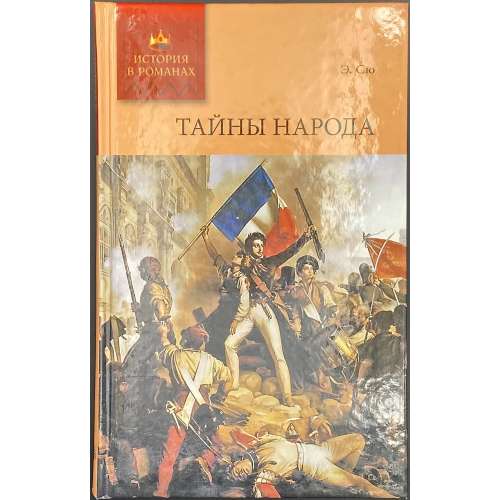 Hardcover volume, 20.7 x 13.2 cm, in glossy paper pictorial boards, blurb to back, lettering to spine, pp.: [1-4] 5-221 [3]. Title-page: {meander} {banner: crawn} | ИСТОРИЯ | В РОМАНАХ {meander} | Э. Сю | ТАЙНЫ НАРОДА | {device МИР КНИГИ} {device Литература} | {meander} || Faux-title: {meander} | ТАЙНЫ НАРОДА | История одного семейства | {meander} || Print run: 3,500 copies. Contributors: Eugène Sue [Эжен Сю] (French, 1804 – 1857) – author О. Иванова, О. Григорьева, Л. Белевич – translators. Original:Eugène Sue. Les mystères du peuple ou Histoire d’une famille de prolétaires à travers les âges. — Paris Administration de librairie, 1849-1857 (16 vol.), according to Worldcat 68 editions published between 1850 and 2003.
Hardcover volume, 20.7 x 13.2 cm, in glossy paper pictorial boards, blurb to back, lettering to spine, pp.: [1-4] 5-221 [3]. Title-page: {meander} {banner: crawn} | ИСТОРИЯ | В РОМАНАХ {meander} | Э. Сю | ТАЙНЫ НАРОДА | {device МИР КНИГИ} {device Литература} | {meander} || Faux-title: {meander} | ТАЙНЫ НАРОДА | История одного семейства | {meander} || Print run: 3,500 copies. Contributors: Eugène Sue [Эжен Сю] (French, 1804 – 1857) – author О. Иванова, О. Григорьева, Л. Белевич – translators. Original:Eugène Sue. Les mystères du peuple ou Histoire d’une famille de prolétaires à travers les âges. — Paris Administration de librairie, 1849-1857 (16 vol.), according to Worldcat 68 editions published between 1850 and 2003. -
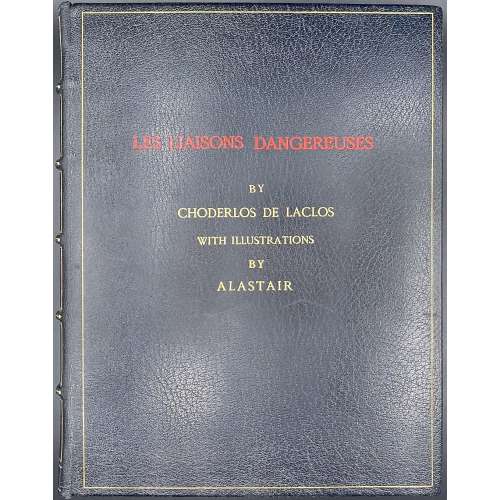 Hardcover, 28.3 x 22.5 cm, two volumes bound in one in full navy crushed morocco by Zaehnsdorf for E. Joseph (signed), border fillet and red and gilt lettering to front, spine with raised bands outlined in gilt, red and gilt lettering in compartments, gilt dentelle, blue moire endpapers, all margins gilt; one of the original wrappers preserved, 14 tissue-guarded colour woodcuts after Alastair; text in black with red titles and initials (hand-set type), and the illustrations printed on watermarked ‘Moirans’ laid paper. Title-page (red and black): Les Liaisons Dangereuses | by | CHODERLOS DE LACLOS | With Illustrations | by | ALASTAIR | THE BLACK SUN PRESS | DEUX RUE CARDINALE | PARIS | MCMXXIX || Limitation: a print run of 1020 copies: 15 on Japon, 1000 on Moirans and 5 NFS; this is copy № 143 (vol. 1) and 303 (vol. 2) Contributors: Pierre Choderlos de Laclos (French, 1741 – 1803) – author. Ernest Christopher Dowson (British, 1867 – 1900) – translator. Alastair [Hans-Henning Baron von Voigt] (German, 1887 – 1969) – artist. Comte Ulric de Civry (French, 1853 – 1935) – dedicatee. Black Sun Press (1927 – 1970) – publishing company. Harry Crosby (American, 1898 – 1929) – publisher. Caresse Crosby [Mary Phelps Jacob] (American, 1892 – 1970) – publisher. Joseph William Zaehnsdorf (Austrian, 1853 – 1930) – bookbinder.
Hardcover, 28.3 x 22.5 cm, two volumes bound in one in full navy crushed morocco by Zaehnsdorf for E. Joseph (signed), border fillet and red and gilt lettering to front, spine with raised bands outlined in gilt, red and gilt lettering in compartments, gilt dentelle, blue moire endpapers, all margins gilt; one of the original wrappers preserved, 14 tissue-guarded colour woodcuts after Alastair; text in black with red titles and initials (hand-set type), and the illustrations printed on watermarked ‘Moirans’ laid paper. Title-page (red and black): Les Liaisons Dangereuses | by | CHODERLOS DE LACLOS | With Illustrations | by | ALASTAIR | THE BLACK SUN PRESS | DEUX RUE CARDINALE | PARIS | MCMXXIX || Limitation: a print run of 1020 copies: 15 on Japon, 1000 on Moirans and 5 NFS; this is copy № 143 (vol. 1) and 303 (vol. 2) Contributors: Pierre Choderlos de Laclos (French, 1741 – 1803) – author. Ernest Christopher Dowson (British, 1867 – 1900) – translator. Alastair [Hans-Henning Baron von Voigt] (German, 1887 – 1969) – artist. Comte Ulric de Civry (French, 1853 – 1935) – dedicatee. Black Sun Press (1927 – 1970) – publishing company. Harry Crosby (American, 1898 – 1929) – publisher. Caresse Crosby [Mary Phelps Jacob] (American, 1892 – 1970) – publisher. Joseph William Zaehnsdorf (Austrian, 1853 – 1930) – bookbinder. -
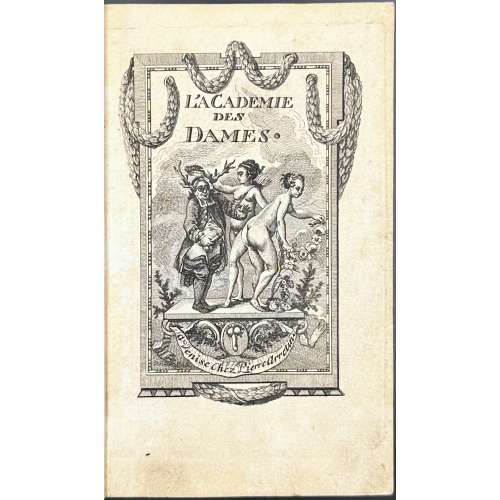 A set of two volumes, one with the text (1) and another with the plates (2), cased in a red ‘romantic’ fitting box of red morocco, lavishly tooled in gilt, c. 1840, more recently adapted to house two books of different size. Vol.1: Hardcover volume, 22.4 x 14 cm, 8vo, bound in half black polished calf (late 19th century) over marbled boards, spine and corners gilt-tooled, raised bands, gilt lozenges in compartments, gilt-lettered red morocco label; marbled endpapers; Francis M. G. Mauleverer armorial bookplate (motto “Deus Providebit”) to front pastedown. Printed on laid paper, Collation: 1 blank, engraved frontis., engraved t.p., A-Cc8 Dd2, 1 blank; pagination:[1] 2-420. Vol. 2: Hardcover volume, 21 x 14 cm, bound in green straight-grain morocco (early 19th century), boards with a roll-tooled palmette border, spine decorated in gilt, blue moiré endpapers, yellow feps, additional blank leaves: 2 in the front and 4 in the back, unpaginated; engraved frontis. and t.p. as in vol. 2, plus 35 plates now attributed to Delcroche printed on India paper, pasted on thicker leaves and bound in numerical order, but pl. 34 after pl. 35; As per Christie’s “The prints, sometimes attributed to de Hooghe, are actually by Delcroche, who illustrated a number of classics in the 1770s and 1780s, including Fanny Hill. AE and ABPC record only three copies of this edition at auction, including the Nordmann and Hayoit copies. Apollinaire Enfer, 277; Dutel A-15; Eros invaincu 16; Foxon Libertine Literature, NY: 1965, p.38; Gay-Lemonnyer I, 10; Pia Enfer, 346.” Contributors: Delcroche (Dutch, 17th century), “artiste hollandaise”, nothing else is known. Dutel and Nordmann attribute the plates to Romeyn de Hooghe (Dutch, 1645 – 1708). Nicolas Chorier (French, 1612 – 1692) – author. Francis M. G. Mauleverer (British, 1918 – 1962) – provenance. Seller’s description: 2 vols in 8vo (215x125 and 204x117 mm), a complete but composite set, the text volume in late 19th c. half black morocco, with corners, gilt spine tooled in gold, the plate volume in a nice early 19th-century green morocco binding, the spine gilt-tooled in compartments, the sides with a roll-tooled palmette border, pale blue moiré style endpapers (hinges repaired). Text vol.: engraved frontispiece, engr. title, pp. 420. Plates vol. comprising: the engraved title, frontispiece, and 35 engraved plates, probably by Delcroche. Both volumes cased in a ‘romantic’ fitting box binding, c. 1840, more recently adapted.
A set of two volumes, one with the text (1) and another with the plates (2), cased in a red ‘romantic’ fitting box of red morocco, lavishly tooled in gilt, c. 1840, more recently adapted to house two books of different size. Vol.1: Hardcover volume, 22.4 x 14 cm, 8vo, bound in half black polished calf (late 19th century) over marbled boards, spine and corners gilt-tooled, raised bands, gilt lozenges in compartments, gilt-lettered red morocco label; marbled endpapers; Francis M. G. Mauleverer armorial bookplate (motto “Deus Providebit”) to front pastedown. Printed on laid paper, Collation: 1 blank, engraved frontis., engraved t.p., A-Cc8 Dd2, 1 blank; pagination:[1] 2-420. Vol. 2: Hardcover volume, 21 x 14 cm, bound in green straight-grain morocco (early 19th century), boards with a roll-tooled palmette border, spine decorated in gilt, blue moiré endpapers, yellow feps, additional blank leaves: 2 in the front and 4 in the back, unpaginated; engraved frontis. and t.p. as in vol. 2, plus 35 plates now attributed to Delcroche printed on India paper, pasted on thicker leaves and bound in numerical order, but pl. 34 after pl. 35; As per Christie’s “The prints, sometimes attributed to de Hooghe, are actually by Delcroche, who illustrated a number of classics in the 1770s and 1780s, including Fanny Hill. AE and ABPC record only three copies of this edition at auction, including the Nordmann and Hayoit copies. Apollinaire Enfer, 277; Dutel A-15; Eros invaincu 16; Foxon Libertine Literature, NY: 1965, p.38; Gay-Lemonnyer I, 10; Pia Enfer, 346.” Contributors: Delcroche (Dutch, 17th century), “artiste hollandaise”, nothing else is known. Dutel and Nordmann attribute the plates to Romeyn de Hooghe (Dutch, 1645 – 1708). Nicolas Chorier (French, 1612 – 1692) – author. Francis M. G. Mauleverer (British, 1918 – 1962) – provenance. Seller’s description: 2 vols in 8vo (215x125 and 204x117 mm), a complete but composite set, the text volume in late 19th c. half black morocco, with corners, gilt spine tooled in gold, the plate volume in a nice early 19th-century green morocco binding, the spine gilt-tooled in compartments, the sides with a roll-tooled palmette border, pale blue moiré style endpapers (hinges repaired). Text vol.: engraved frontispiece, engr. title, pp. 420. Plates vol. comprising: the engraved title, frontispiece, and 35 engraved plates, probably by Delcroche. Both volumes cased in a ‘romantic’ fitting box binding, c. 1840, more recently adapted. -
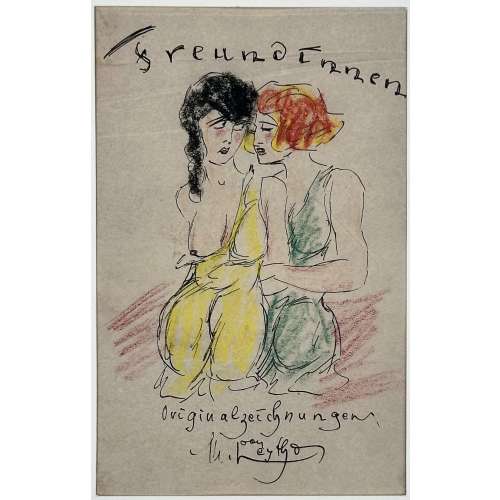 Seven pen and ink and colour crayon drawings on thin wove paper approx. 140 x 100 mm, each attached to a sheet 310 x 240 mm and mounted in a passepartout, placed in an aubergine cardboard folder 310 x 250 mm with a tan vellum spine and paper flaps inside; olive label with double border and gilt lettering to front cover "Dessins" [Drawings]. The first sheet is a title-page lettered in manuscript: Freundinnen | {vignette} | Originalzeichnungen | M. Leytho || [Girlfriends. Original drawings]. Information about the artist at www.honesterotica.com: "Mitja Leytho, almost certainly a pseudonym, is yet another mediocre yet fascinating amateur artist from the Germany of the 1920s about whom we know absolutely nothing beyond the four portfolios which bear the ‘Leytho’ signature". We shall notice that this set of drawings was produced by a talented professional, not an amateur.
Seven pen and ink and colour crayon drawings on thin wove paper approx. 140 x 100 mm, each attached to a sheet 310 x 240 mm and mounted in a passepartout, placed in an aubergine cardboard folder 310 x 250 mm with a tan vellum spine and paper flaps inside; olive label with double border and gilt lettering to front cover "Dessins" [Drawings]. The first sheet is a title-page lettered in manuscript: Freundinnen | {vignette} | Originalzeichnungen | M. Leytho || [Girlfriends. Original drawings]. Information about the artist at www.honesterotica.com: "Mitja Leytho, almost certainly a pseudonym, is yet another mediocre yet fascinating amateur artist from the Germany of the 1920s about whom we know absolutely nothing beyond the four portfolios which bear the ‘Leytho’ signature". We shall notice that this set of drawings was produced by a talented professional, not an amateur. -
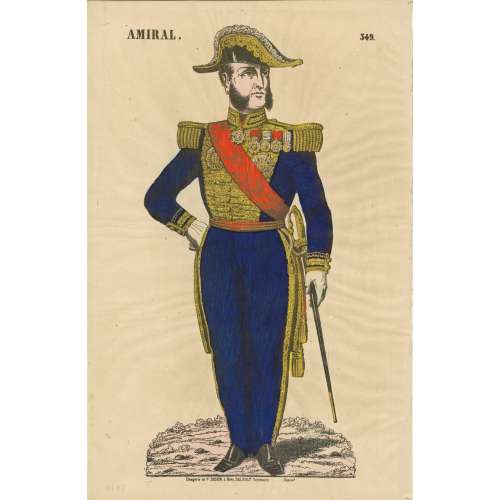 Hand-coloured woodcut on wove paper, 440 x 285 mm; black ink stamp “5049” to reverse. Top left: "AMIRAL"; right: "349". Below: "Imagerie de DIDION, à Metz, DELHALT Successeur." — "Déposé." Paulin Didion (French, 1831 – 1879) – publisher/printer.
Hand-coloured woodcut on wove paper, 440 x 285 mm; black ink stamp “5049” to reverse. Top left: "AMIRAL"; right: "349". Below: "Imagerie de DIDION, à Metz, DELHALT Successeur." — "Déposé." Paulin Didion (French, 1831 – 1879) – publisher/printer. -
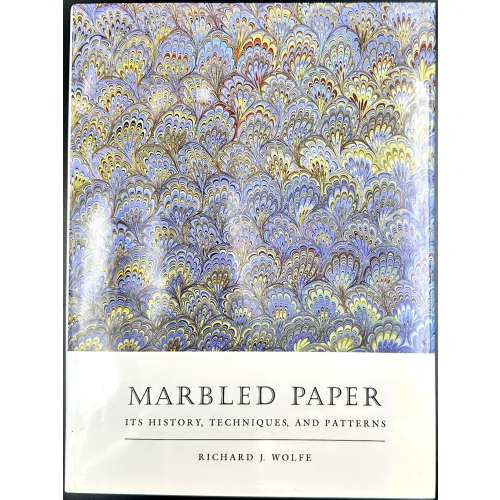 Hardcover volume, 311 x 235 mm, bound in blue cloth, gilt lettering to spine, olive endpapers, pictorial dust jacket with text to flaps, pp.: [i-xi] xii-xvi, [1] 2-245 [246 blank], plus 19 leaves of plates and 4 leaves of captions, extraneous to collation (169 leaves total). Title-page: MARBLED | PAPER | ITS HISTORY, TECHNIQUES, | AND PATTERNS | With Special Reference to the Relationship of | Marbling to Bookbinding in Europe and | the Western World | RICHARD J. WOLFE {publisher’s device} | UNIVERSITY OF PENNSYLVANIA PRESS | Philadelphia || Imprint: Copyright © 1990 by the University of Pennsylvania Press | All rights reserved | Printed in Japan | Second printing 1991 || Frontispiece: A Publication of the | A. S. W. ROSENBACH FELLOWSHIP | IN BIBLIOGRAPHY || Wolfe, Richard J. (American, 1928 – 2017)
Hardcover volume, 311 x 235 mm, bound in blue cloth, gilt lettering to spine, olive endpapers, pictorial dust jacket with text to flaps, pp.: [i-xi] xii-xvi, [1] 2-245 [246 blank], plus 19 leaves of plates and 4 leaves of captions, extraneous to collation (169 leaves total). Title-page: MARBLED | PAPER | ITS HISTORY, TECHNIQUES, | AND PATTERNS | With Special Reference to the Relationship of | Marbling to Bookbinding in Europe and | the Western World | RICHARD J. WOLFE {publisher’s device} | UNIVERSITY OF PENNSYLVANIA PRESS | Philadelphia || Imprint: Copyright © 1990 by the University of Pennsylvania Press | All rights reserved | Printed in Japan | Second printing 1991 || Frontispiece: A Publication of the | A. S. W. ROSENBACH FELLOWSHIP | IN BIBLIOGRAPHY || Wolfe, Richard J. (American, 1928 – 2017) -
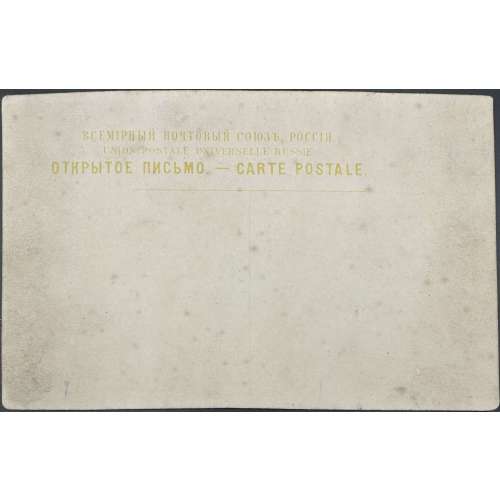 Ten postcards 90 x 140 mm, text in yellow "ВСЕМIРНЫЙ ПОЧТОВЫЙ СОЮЗЪ. РОССIЯ. | UNION POSTALE UNIVERSELLE RUSSIE. | ОТКРЫТОЕ ПИСЬМО. — CARTE POSTALE. || On the reverse, a blue ink woodcut image is printed in the upper left corner, and a blue ink numbered image title is in the bottom centre. Holding the postcard against the backlight reveals a hidden image of an indecent nature (erotic). The use of Latin characters "R" and "N" instead of Russian "Р" and "Н" suggests that the cards were produced in Europe, probably in France. Inscriptions: 1. ПЕRВЫЕ ДNИ; 2. ПОRА ЛЮБВИ; 3. ВЪ ЛЮДИ; 4. КЪ "СВОБОДNОМУ ИСКУССТВУ"; 5. "СВОБОДNЫЙ ТRУДЪ; 6. БЕЗЪ ГОRЯ И ПЕЧАЛИ; 7. NАЗАДЪ КЪ "СВОБОДNОЙ ЛЮБВИ"; 8. ВСЕ ЧТО ОСТАЛОСЬ!; 9. БЕЗЪ КRОВА И ПRИСТАNИЩА; 10. ИЗЪ ЗА ХЛѢБА.
Ten postcards 90 x 140 mm, text in yellow "ВСЕМIРНЫЙ ПОЧТОВЫЙ СОЮЗЪ. РОССIЯ. | UNION POSTALE UNIVERSELLE RUSSIE. | ОТКРЫТОЕ ПИСЬМО. — CARTE POSTALE. || On the reverse, a blue ink woodcut image is printed in the upper left corner, and a blue ink numbered image title is in the bottom centre. Holding the postcard against the backlight reveals a hidden image of an indecent nature (erotic). The use of Latin characters "R" and "N" instead of Russian "Р" and "Н" suggests that the cards were produced in Europe, probably in France. Inscriptions: 1. ПЕRВЫЕ ДNИ; 2. ПОRА ЛЮБВИ; 3. ВЪ ЛЮДИ; 4. КЪ "СВОБОДNОМУ ИСКУССТВУ"; 5. "СВОБОДNЫЙ ТRУДЪ; 6. БЕЗЪ ГОRЯ И ПЕЧАЛИ; 7. NАЗАДЪ КЪ "СВОБОДNОЙ ЛЮБВИ"; 8. ВСЕ ЧТО ОСТАЛОСЬ!; 9. БЕЗЪ КRОВА И ПRИСТАNИЩА; 10. ИЗЪ ЗА ХЛѢБА. -
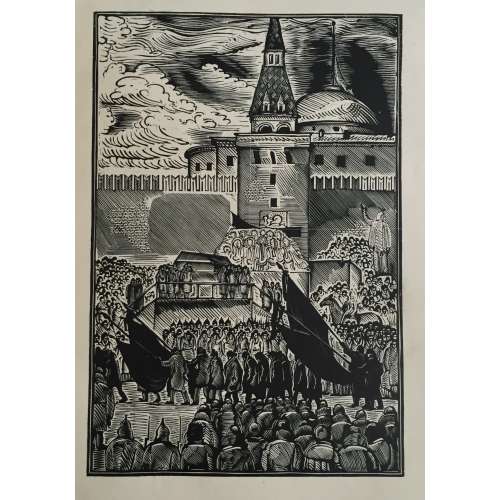
Каторга и ссылка. Историко-революционный вестник. Книга 9, № 2, 1924. Общество бывших политических каторжан и ссылно-поселенцев. Под общей редакцией Вл. Виленского (Сибирякова). Москва, 1924. Государственное издательство "Типография Печатный Двор", Ленинград. Тираж: 4,000 экз. Две гравюры на дереве А.И.Кравченко "В дни скорби. Похороны В.И. Ленина на Красной площади" и "В.И.Ленин в Доме Союзов. 23-27 января 1924 г."
-
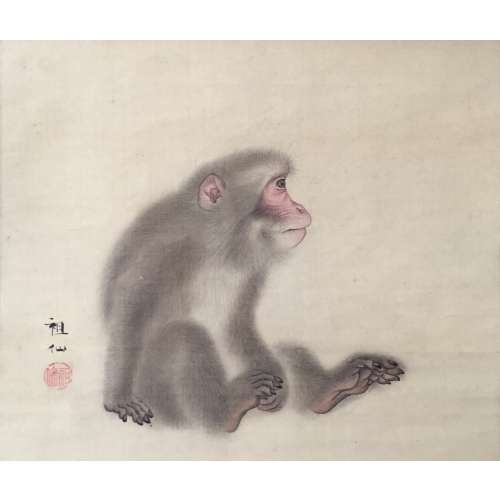 Mori Sosen (1747-1821). Seated Monkey. Hanging scroll painting. Ink and colour on silk. Signed: Sosen. Sealed: Sosen. 28.8 x 33.3 cm.
Mori Sosen (1747-1821). Seated Monkey. Hanging scroll painting. Ink and colour on silk. Signed: Sosen. Sealed: Sosen. 28.8 x 33.3 cm. -
 Iron tsuba of oval form with design of stylized paulownia (nage-giri) in openwork (sukashi). Leaf veins carved in kebori technique. Rounded rim. Copper sekigane. Unsigned. Attributed to Kanshirō, third generation Nishigaki (1680-1761). Edo period: Early 18th century (Kyoho / Genbun era). Size: Height: 77.8 mm. Width: 71.9 mm. Rim thickness: 5.9 mm. Center thickness: 5.0 mm. Provenance: Sasano Masayuki Collection, № 264: "Nishigaki. Third generation Kanshiro (died in in the eleventh year of Hohreki, 1761 at the age of eighty-two). This oblong shape appears a little amateurish at first, however, it was done intentionally to add flavor to to the design. The neat composition is a feature of the third Kanshiro."
Iron tsuba of oval form with design of stylized paulownia (nage-giri) in openwork (sukashi). Leaf veins carved in kebori technique. Rounded rim. Copper sekigane. Unsigned. Attributed to Kanshirō, third generation Nishigaki (1680-1761). Edo period: Early 18th century (Kyoho / Genbun era). Size: Height: 77.8 mm. Width: 71.9 mm. Rim thickness: 5.9 mm. Center thickness: 5.0 mm. Provenance: Sasano Masayuki Collection, № 264: "Nishigaki. Third generation Kanshiro (died in in the eleventh year of Hohreki, 1761 at the age of eighty-two). This oblong shape appears a little amateurish at first, however, it was done intentionally to add flavor to to the design. The neat composition is a feature of the third Kanshiro."


